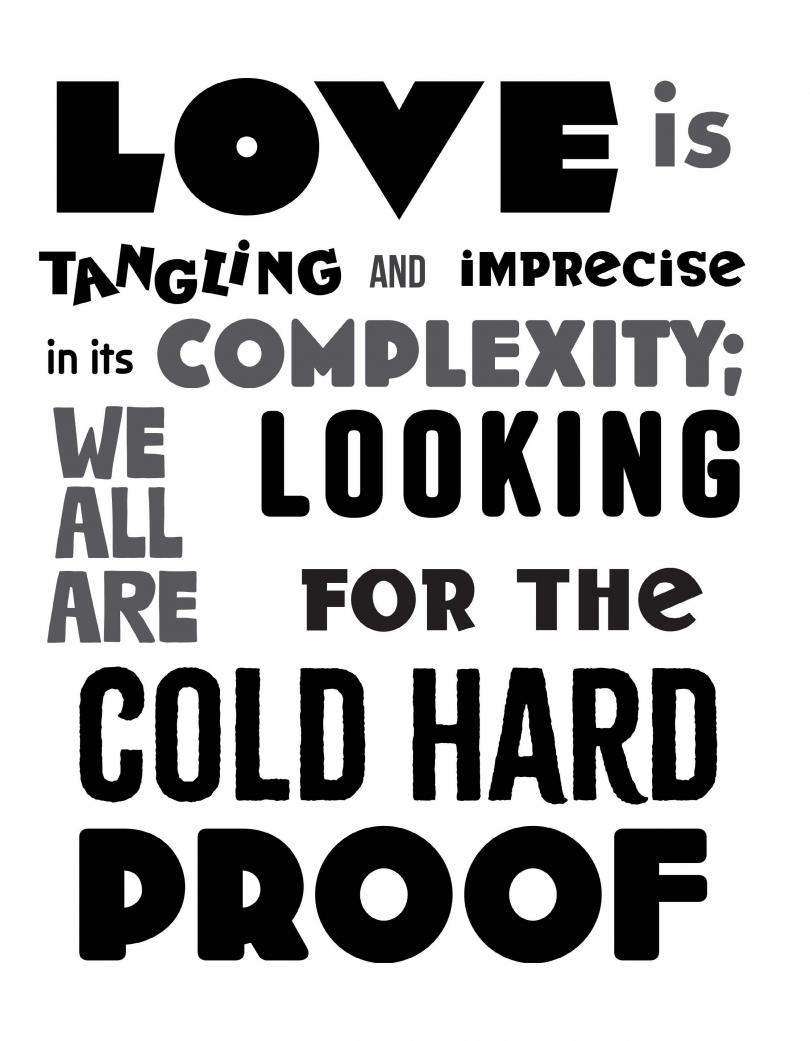By Richard LeComte
 LEXINGTON, Ky. — Beth Connors-Manke started the nonfiction journal The Canelands audaciously with the theme of “love.” The topic, for one thing, is vast.
LEXINGTON, Ky. — Beth Connors-Manke started the nonfiction journal The Canelands audaciously with the theme of “love.” The topic, for one thing, is vast.
“The Canelands offers you a thicket of ruminations, dense and sometimes difficult to pass through: love’s genealogies, love in friendship, love amidst catastrophe, love as a gift, love that empties the self, love in you and in old age,” Connors-Manke writes in A Note From the Editor for the first issue of the journal. “See what you can find.”
The University of Kentucky’s Department of Writing, Rhetoric and Digital Studies, part of the College of Arts and Sciences, published the 200-copy edition of The Canelands in the summer of 2024. Funding comes from the department and the College, she said. Connors-Manke, as editor in chief, led a student staff in selecting articles, designing and producing the journal, which also is online. She wanted to help students delve into the idea of public writing.
"I wrote for
North of Center, which was a community newspaper in central Kentucky, for four or five years,” said Connors-Manke, who is an associate professor. “I had that experience, and I wanted to bring that to my students as well. They'd have hands-on work as they tried to bring their UK academic work to bear on what they were going to do after they graduate.”

Canelands refers to an old name for central Kentucky, she said.
"I pulled the name from a song called ‘Fabled Canelands’ by a musician named Warren Byrom,” she said. “He was pulling from some of the natural history of central Kentucky. “
In her editorial note, she recounts the natural history of central Kentucky from the first human habitation about 12,000 years ago through the Mississippian/Late Prehistoric periods, when as Native American agriculture declined, cane vegetation took over the bottomlands.
“When European settlers came in, they ended up in an area where they saw cane thickets," she said. “The thickets became part of the mythology of the area.”
Contributors to the magazine include professors, students and a farmer-musician. Among the titles are “A Natural History of Love,” “Your Mind is the Lover,” and “The Love Framework: A Questionnaire.” Connors-Manke sees the journal as an outlet for writers to plumb the depth of the humanities.

“What I don’t see represented in national public reading right now is material that is framed by the big questions that the humanities talk about,” she said. "There is a magazine that came out of the University of Chicago called The Point. I saw the work that they were doing. A lot of the writers related to that publication are philosophers, so it's very philosophy driven. The idea is to take these ideas out of the academy and bring these questions to the general readership in the United Sates.”
She sees a teaching component to the journal as well: Her students in her advanced writing classes will benefit from reading serious writing, given that contemporary popular media downplay serious discussion of topics in the humanities.
"I think it's super important that we read a lot of junk,” she said. “We've been encouraged to downgrade what we read and how we think. I wanted my students to see how valuable The Canelands project is in terms of their own writing for the ones that are in the advanced composition class and for those who are on the production side of it. I want them to have a bigger vision of what we can do.”
The journal features illustrations, cartoons and some inventive uses of typefaces. The broadness of the topic and the freedom of design gave students a lot of room to play within style boundaries.
“I was in charge of both doing the comic strip that appears throughout the first issue as well as doing some of the illustrations that appear on the interior covers,” said David Crosby, who served as a designer and illustrator for the journal and who graduated in May. "Our process involved asking Dr. Connors-Manke about what she wanted the magazine to look like and feel like. She wanted The Canelands to be a theme across the issues — not just a rustic look, but something that also feels contemporary. That’s why the cover uses abstract forms that allude to foliage.”
The magazine also gave students the opportunity to edit copy closely.
"We started out with Dr. Connors-Manke doing a lot of the copy editing and line editing, and I was reading copy behind her,” said Grace Medley, the editorial assistant and copy editor for the publication and a May Writing, Rhetoric and Digital Studies graduate. “As we progressed, I did a little bit more heavy-handed editing — not quite line editing, but definitely more detailed.”
Connors-Manke is starting to gather manuscripts for a second issues of The Canelands; this time the theme will be “embodiment.” The deadline for submissions is Dec. 1.
“We are naturally embodied creatures,” Connors-Manke writes. “Yet we live in an age that is, paradoxically exceedingly material and increasingly disembodies. ... Throughout history, individuals and philosophers have pursued this divorce. But why is embodiment — the union of body and soul — such an uneasy marriage?”
